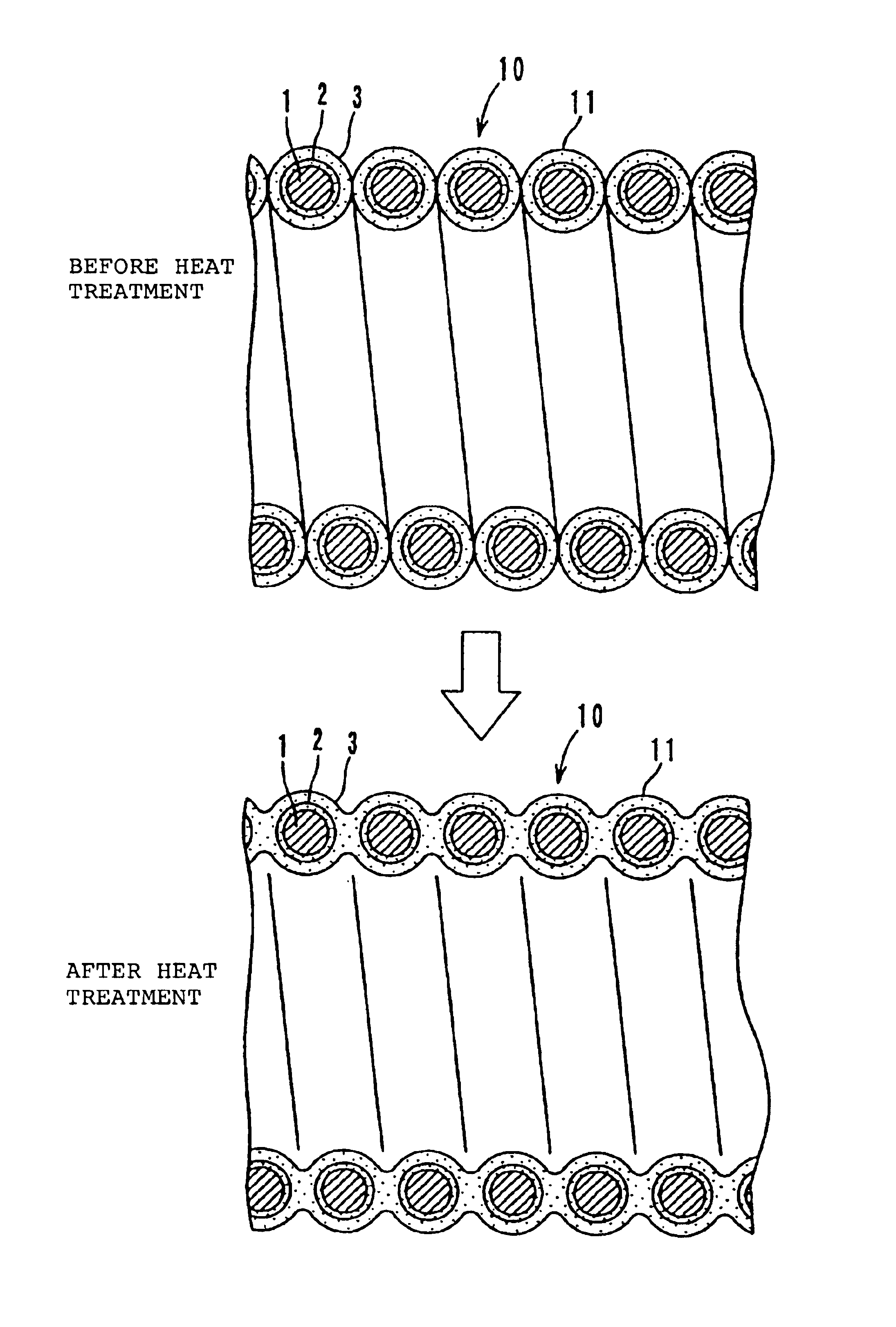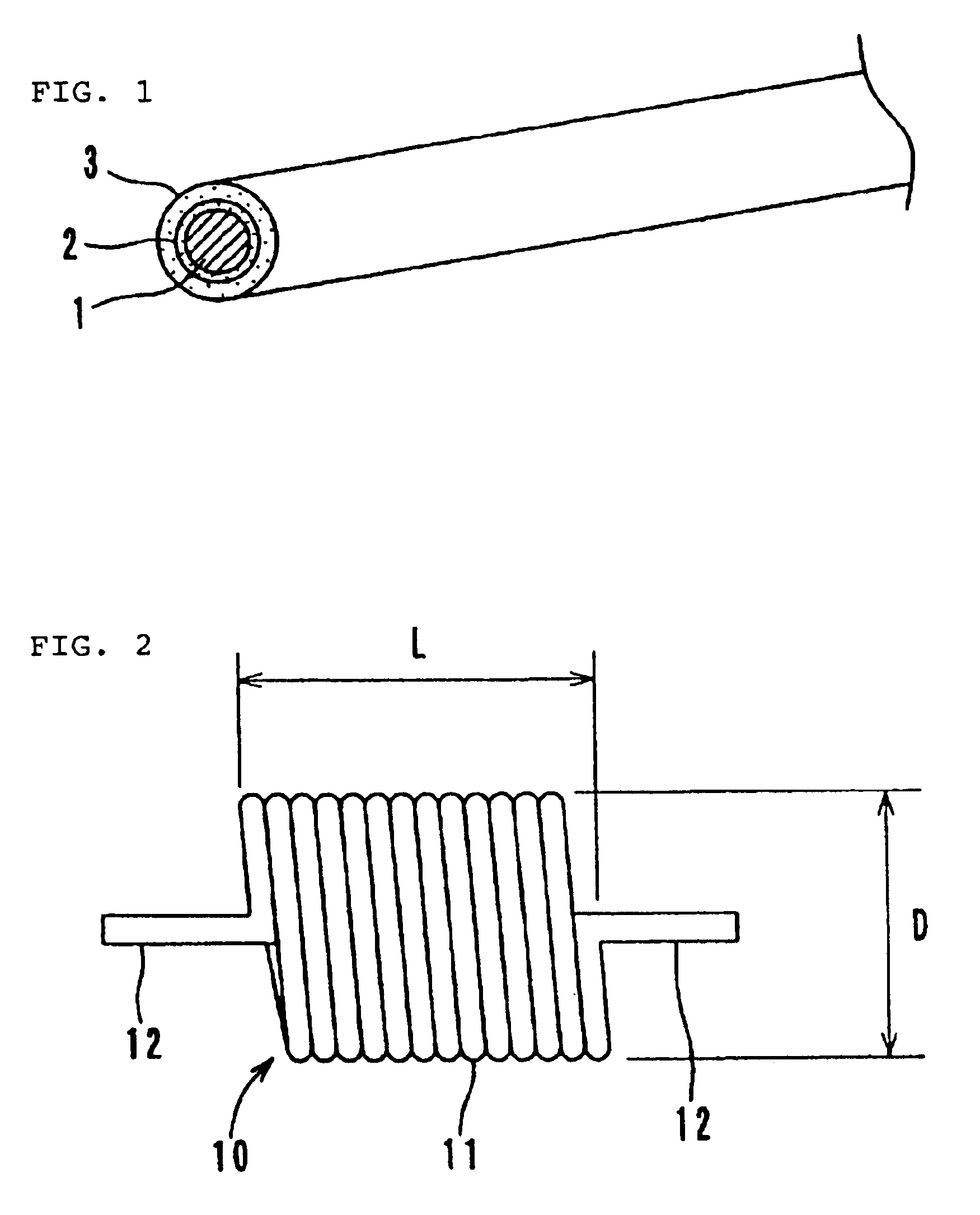Method for manufacturing an inductor
a manufacturing method and inductor technology, applied in the field of inductors, can solve the problems of difficult to maintain the shape of the coil conductor by itself, the interruption of automated manufacturing lines, and the likely deformation of the coil conductor, etc., to achieve the effect of improving the shape retention property, being easy to apply and effective, and being superior in mass-productivity
- Summary
- Abstract
- Description
- Claims
- Application Information
AI Technical Summary
Benefits of technology
Problems solved by technology
Method used
Image
Examples
Embodiment Construction
Hereinafter, an inductor and a manufacturing method therefor according to preferred embodiments of the present invention will be described with reference to accompanying drawings.
As shown in FIG. 1, a metal wire 1 provided with an insulating film 2 thereon is first prepared. As the metal wire 1, for example, a metal of about 200 μm in diameter including at least a material selected from the group consisting of Ag, Pd, Pt, Au, and Cu, or an alloy wire containing at least one metal mentioned above is preferably used. However, other suitable materials may also be used. As the insulating film 2, for example, a resin such as a polyester resin or a polyamide-imide resin, or other suitable material, is preferably used. A thermal melting resin 3 is coated on the surface of the insulating film 2 covering the metal wire 1. The thickness of the thermal melting resin 3 is, for example, approximately 1 μm. As the thermal melting resin 3, a thermosetting resin or a thermoplastic resin, such as an...
PUM
| Property | Measurement | Unit |
|---|---|---|
| Temperature | aaaaa | aaaaa |
| Thickness | aaaaa | aaaaa |
| Diameter | aaaaa | aaaaa |
Abstract
Description
Claims
Application Information
 Login to View More
Login to View More - R&D
- Intellectual Property
- Life Sciences
- Materials
- Tech Scout
- Unparalleled Data Quality
- Higher Quality Content
- 60% Fewer Hallucinations
Browse by: Latest US Patents, China's latest patents, Technical Efficacy Thesaurus, Application Domain, Technology Topic, Popular Technical Reports.
© 2025 PatSnap. All rights reserved.Legal|Privacy policy|Modern Slavery Act Transparency Statement|Sitemap|About US| Contact US: help@patsnap.com



